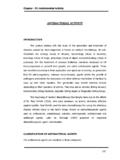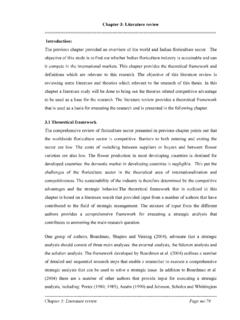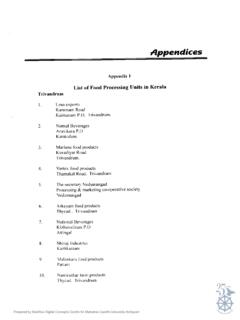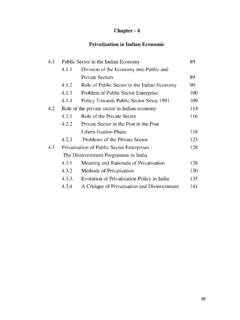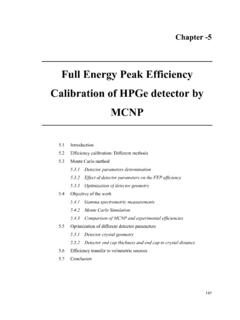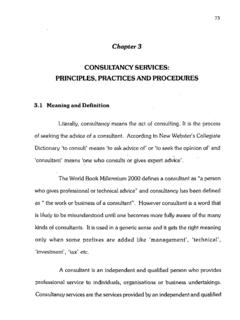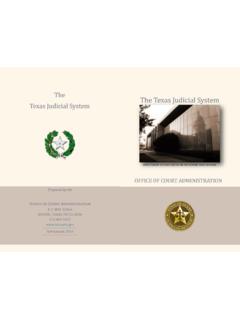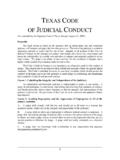Transcription of Chapter-2 HISTORICAL BACKGROUND OF JUDICIAL SYSTEM …
1 Chapter-2 HISTORICAL BACKGROUND OF JUDICIAL SYSTEM IN INDIA The present JUDICIAL SYSTEM of India was not a sudden creation. It has been evolved as the result of slow and gradual process and bears the imprint of the different period of Indian history. The period which however, have made the greatest impact on the existing SYSTEM are those nearest to the present times and it is not surprising that the period preceding and following the down of independence, more particularly that one after the coming into force of the constitution have been the greatest molding factors.
2 Administration of justice is one of the most essential functions of the If men were gods and angels, no law courts would perhaps be necessary though even then the skeptics might refer to the quarrels among gods, particularly in the context of goddesses. As it is, we find that though man may be a little lower than the angels, be has not yet shed off the brute. Not far beneath within the man, there lurks the brute and the brute is apt to break loose on occasions, To curb and control that brute and to prevent degeneration of society into a state of tooth and claw, we need the rule of law.
3 We also need the rule of law for punishing all deviations and lapses from the code of conduct and standard of behavior which the community speaking through its representatives has prescribed as the law of the land. Being human, disputes are bound to arise amongst us. For the settlement of those disputes, we need guidelines in the form of laws and forums to redress the 1 Sharma, Administration of Justice in Ancient India, New Delhi: Harman Publishing House, 1988, 22 wrongs in the form of courts.
4 Laws and courts have always gone together. There is a close nexus between them; neither court can exist without the laws or laws without the courts. The JUDICIAL SYSTEM deals with the administration of the laws through the agency of the courts. The SYSTEM provides the machinery for the resolving of the disputes on account of which the aggrieved. Party approaches the courts. Nothing rankles in human heart more than a brooding sense of injustice. No society can allow a situation to grow where the impression prevails of there being no redress for grievances.
5 A State consists of three organs, the legislature, the executive and the judiciary. The judiciary, it has been said, is the weakest of the three organs. It has neither the power of the purse nor the power of the sword, neither money nor patronage, not even the physical force to enforce its decisions. Despite that, the courts have by and large enjoyed high prestige amongst and commanded respect of the people. This is so because of the moral authority of the courts and the confidence the people have in the role of the courts to do justice between the rich and the poor, the mighty and the weak, the state and the citizen, without fear or favor.
6 JUDICIAL SYSTEM IN ANCIENT INDIA History of our JUDICIAL SYSTEM takes us to the hoary past when Manu and Brihaspati gave us Dharam Shastras, Narada the Smritis, and Kautilya the A study of these memorable books would reveal that we in ancient India had a fairly well-developed and sophisticated SYSTEM of administration of justice. In broad outlines there is considerable similarity between the SYSTEM then in vogue and the SYSTEM now in force. A civil JUDICIAL proceeding in ancient India 2 Ibid.
7 , 23 as at present commenced ordinarily with the filing of a plaint or what was known as Purva Paksha before a competent authority. A plaint, it was required, must be brief in words, unambiguous and free from confusion. In case of disputes about property, elaborate rules laid down the requirement about giving detailed and full description of the property. Written statements known as Uttara Paksha were required to be filed by the defendants and the rules enjoined that they must not be vague and must meet all the points of the plaint.
8 Normally, parties were required to produce their witnesses. The presence of the witnesses who were far away or would not stir out was secured by the orders of the judge. Different modes of proof for substantiating allegations were prescribed. On the conclusion of the trial, judgment known as Nirnaya was pronounced and the successful party became entitled to Jayapatra or a document of success, Execution of the decrees could entail imprisonment, sale, fine and demand for additional security.
9 The doctrine of res judicata known as Pran Nyaya was well-known. In criminal law there was an elaborate classification of offences. Apart from offences like rape, dacoity and the like (which may be called conventional offences), there were other offence like not running to the rescue of another person in distress. Punishment was prescribed for causing damage to trees in city parks, to trees providing shades, to trees bearing flowers and fruits and to trees in holy It was an offence for a judge to give a wrong decision out of corrupt motive.
10 Perjury by a witness attracted severe penalty. There were six types of punishment, namely, fine, reprimand, torture, imprisonment, death and banishment. Theft was classified into three kinds according to the value of the thing stolen. There was also a classification of thieves. Some were considered open or 3 Shilwant, Legal and Constitutional History of India, New Delhi: Sanjay Prskashan, 2003, 24 patent thieves and others secret thieves.

